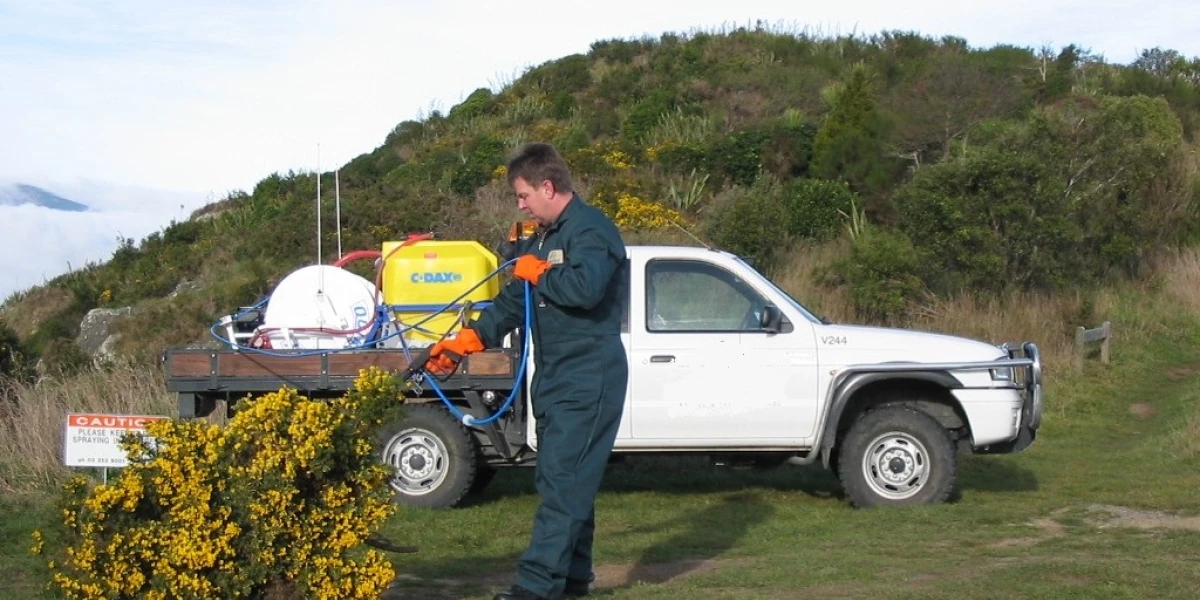Cleaning Professional Spray Equipment
Why Clean Spray Equipment
Spray tank and hose clean‐out are necessary when changing between products to avoid chemical incompatibility of mixed formulations or plant injury due to contamination. Taking time at the completion of the spray day to clean the sprayer can help prevent drying and hardening of product residues. This will also reduce the risk of corrosion and damage to spray equipment. Spray mix should not be left in tanks overnight without agitation.
When cleaning a sprayer, the primary concern is to attain three objectives.
- Diluting the active ingredient below damaging concentrations.
- Deactivating the herbicide.
- Removing the herbicide from the sprayer system.
Cleaning
A sprayer should never be left to sit overnight without cleaning. If the same product mixture is to be used the next day, flushing the sprayer system with water should be enough. However, if switching products, a more thorough cleaning is needed.
Generally, plastic tanks require additional attention when cleaning compared to stainless steel tanks. Pay attention to sprayer sumps and pumps, and clean or replace screens and filters.
Inspect the inside of hoses; cracked hoses can accumulate residues. Make sure to clean irregular surfaces, such as baffles, plumbing fixtures and agitation units. Don’t forget the inside top of the spray tank, as well as, the tank cover.
When performing sprayer tank clean‐out, care should be taken to avoid contamination of crops, water supplies and streams. Clean equipment in an area inaccessible to children, pets and livestock. The best disposal of rinsate is done by spraying back in the use area. If that is not possible, dispose of in waste ground provided that:
- the effective application rate is less than the recommended application rate on the product's label,
- runoff does not occur,
- no spray mixture enters any surface water (e.g. streams or ponds).
The following sprayer clean‐out procedure is recommended for all herbicides, in general. Read and follow the label directions if it specifies a different clean‐out procedure.
- Drain the tank and thoroughly rinse the inside surface with clean water. Spray rinse water through the spray nozzle/s for at least one minute.
- Fill the spray tank with clean water and if necessary add an appropriate cleaning agent*. Fill the hoses and nozzles and allow the agitator (if present) to operate for 15 minutes.
- Allow the sprayer to sit for two hours or overnight while full of cleaning solution so the herbicide residues can be fully removed from inside the sprayer.
- Spray the cleaning solution through the nozzles.
- Clean nozzles, screens, and filters. Rinse the sprayer to remove the cleaning solution and spray rinsate through the nozzles.
- Rinse the entire system with clean water.
*See New Zealand Standard NZ8409.2004 Management of Agrichemicals section R5 for more information.
Cleaning Agents
Household ammonia, chlorine bleach, commercial tank cleaners, and household detergents are examples of several types of tank‐cleaning agents. Each has a specific purpose or use. Commercial tank cleaners and detergents help remove water and oil‐soluble herbicides. Commercial tank cleaners usually perform better than household detergents; the tank cleaners generally raise the pH and can deactivate some herbicides in addition to dissolving them. Chlorine bleach lowers the pH of the solution which enhances the degradation of some herbicides. Ammonia increases the pH of the solution which increases the solubility of others. Check product labels for any advice on cleaning.
CAUTION! Never mix chlorine bleach and ammonia, or chlorine bleach with fertilizers containing ammonia, as it will produce a dangerous chlorine gas! The gas will irritate eyes, nose, throat and lungs.
Kiwicare products do not require cleaning agents, however, the use of household clothes washing powder can assist cleaning.
David Brittain
Kiwicare
